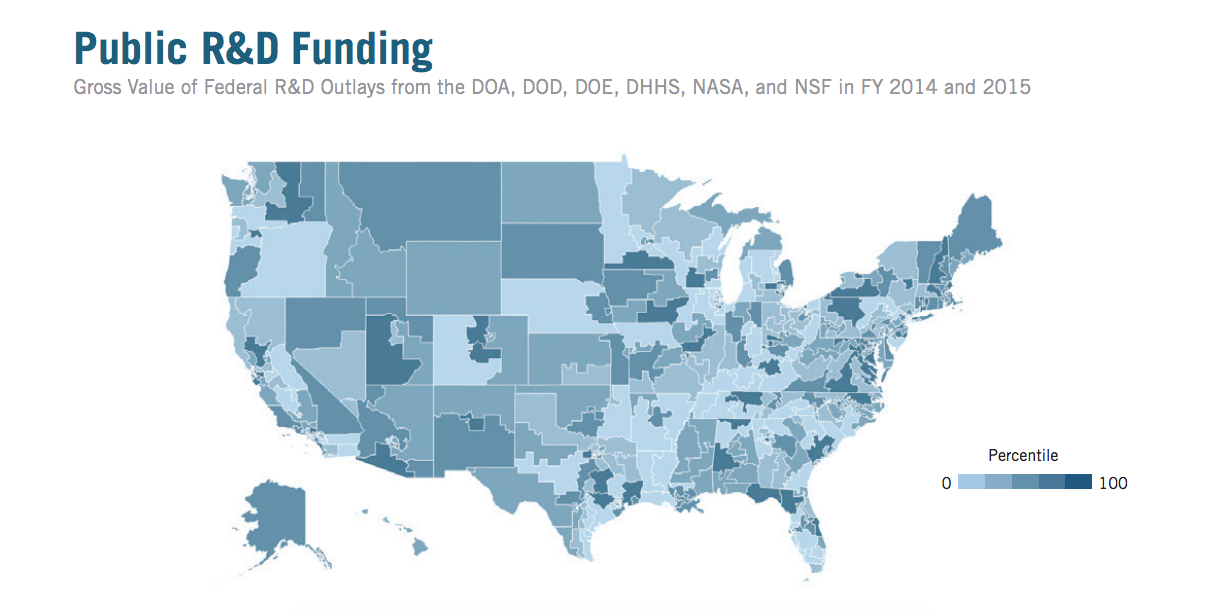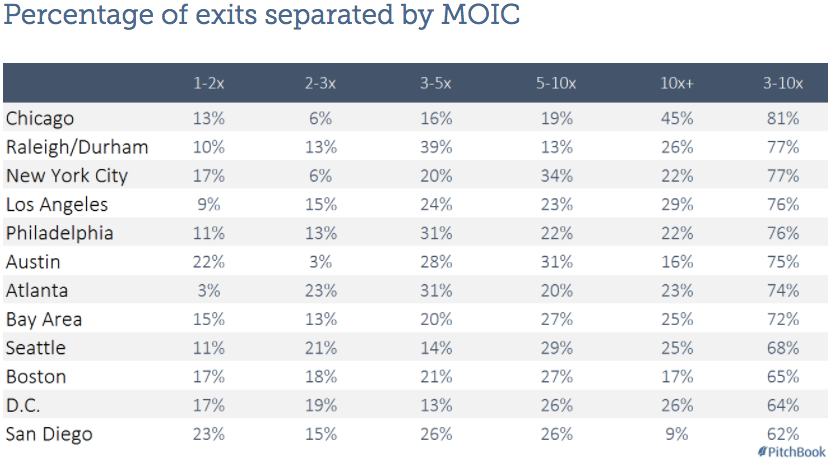High-Tech Innovation Is Happening in More Places Than You Think

RoboLab/Shutterstock.com
And federal funding should match the the economy’s diaspora, according to a newly released ITIF report.
The high-tech economy is widely dispersed across all 435 U.S. congressional districts, not simply limited to a few regional innovation hubs, according to a new Information Technology and Innovation Foundation report .
About 30,000 people on average per congressional district are employed by the sector, according to the “ High-Tech Nation ” report, and 75 percent of districts have 1,000 or more patent filers.
Federal research funding, to the tune of $50 million, went to more than half of all districts in the last two years.
“The myopic view that the high-tech economy is only Silicon Valley and a few other bright spots like Boston or North Carolina’s Research Triangle is flat wrong,” said Robert D. Atkinson, the D.C.-based nonpartisan research institute’s president, in a statement . “Even worse, that misconception undermines support for broad-based, bipartisan policies to spur further innovation and growth across the nation.”

The evolution of established agriculture, mining and manufacturing markets across the U.S. continues to spawn technological innovations, Atkinson continued, as does cloud computing and increased access to broadband in the smallest of cities.
A June study by Seattle-based software provider PitchBook found that while the San Francisco Bay Area boasts the most active startup community, innovation hubs in Chicago, North Carolina’s Research Triangle, New York City, Los Angeles, Philadelphia, Austin and Atlanta all generated better venture capital returns.

While it’s easy to get caught up in rankings of tech ecosystems, oftentimes they have more to do with perception than reality and are only useful benchmarks for those lacking a firm knowledge of the industry.
According to ITIF’s report, high-tech innovation is being driven in unlikely places where STEM education is being taught and Internet of Things technology is taking root. In no congressional district do less than 80 percent of households have access to 10 Mbps internet.
High-skill, high-wage jobs depend on access to global markets, according to the report:
There is a similarly strong correlation (0.72) between the number of highly skilled immigrants in a district and the value of its IT service exports. Likewise, there are strong correlations at the district level between highly skilled immigration and employment in computer and math occupations (0.74), in the broader category of STEM occupations (0.73), and in the overlapping universe of high-tech occupations (0.65). This highlights the valuable role that highly educated and skilled immigrants play in America’s innovation ecosystem, and it explains why talent has become one of the world’s most sought-after commodities.
“We urge Members of Congress and other policymakers to find common cause in advancing an agenda that continues to build up the foundations of an innovation-driven economy, including a highly skilled workforce, robust research and development spending, digital-age infrastructure, and globally competitive tech-driven industries,” Atkinson said. “It’s the surest way to raise productivity, bolster competitiveness, and boost wages.”
The full report can be read here



